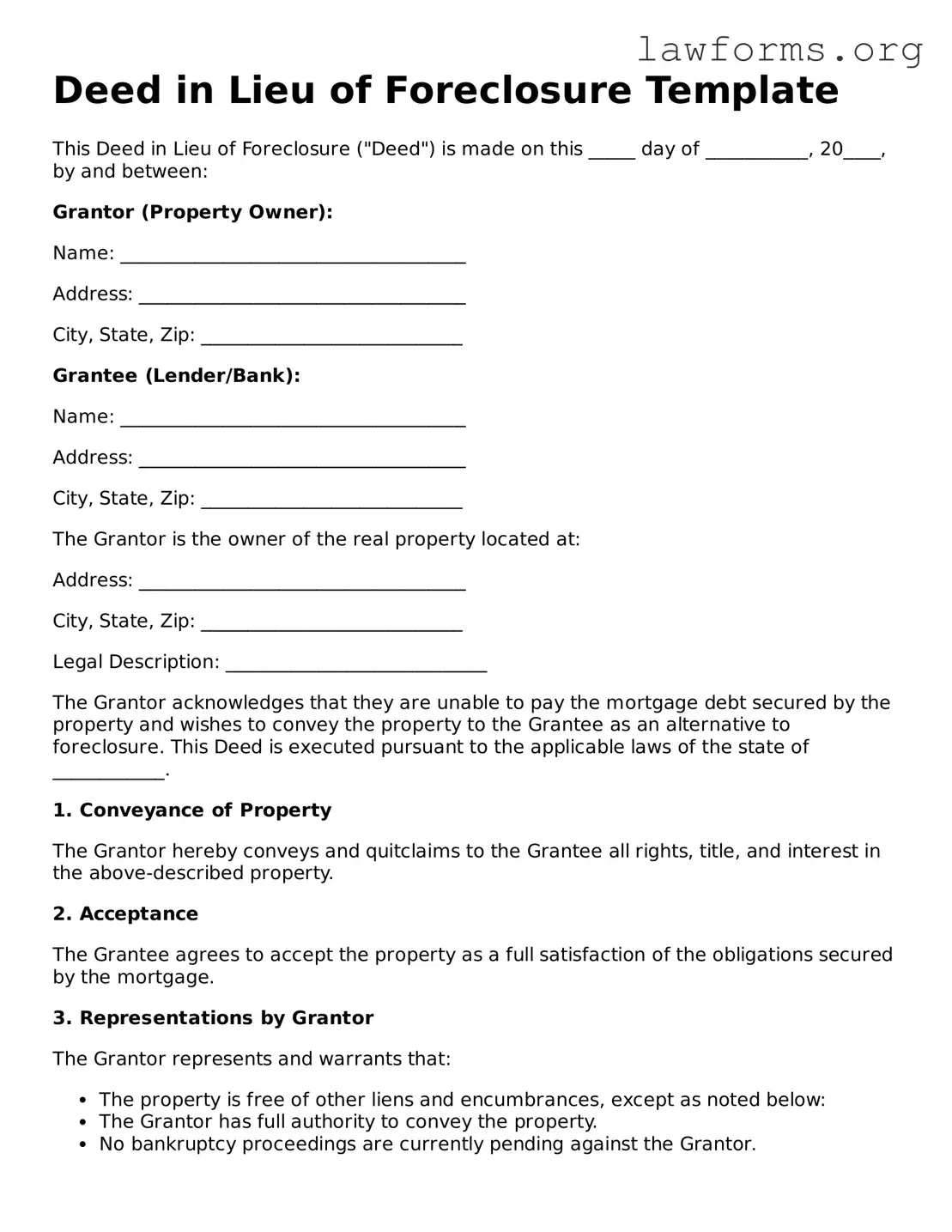Deed in Lieu of Foreclosure Template
This Deed in Lieu of Foreclosure ("Deed") is made on this _____ day of ___________, 20____, by and between:
Grantor (Property Owner):
Name: _____________________________________
Address: ___________________________________
City, State, Zip: ____________________________
Grantee (Lender/Bank):
Name: _____________________________________
Address: ___________________________________
City, State, Zip: ____________________________
The Grantor is the owner of the real property located at:
Address: ___________________________________
City, State, Zip: ____________________________
Legal Description: ____________________________
The Grantor acknowledges that they are unable to pay the mortgage debt secured by the property and wishes to convey the property to the Grantee as an alternative to foreclosure. This Deed is executed pursuant to the applicable laws of the state of ____________.
1. Conveyance of Property
The Grantor hereby conveys and quitclaims to the Grantee all rights, title, and interest in the above-described property.
2. Acceptance
The Grantee agrees to accept the property as a full satisfaction of the obligations secured by the mortgage.
3. Representations by Grantor
The Grantor represents and warrants that:
- The property is free of other liens and encumbrances, except as noted below:
- The Grantor has full authority to convey the property.
- No bankruptcy proceedings are currently pending against the Grantor.
4. Miscellaneous
This Deed shall be binding upon and inure to the benefit of the parties and their respective successors and assigns. If any provision of this Deed is determined to be unenforceable, the remaining provisions shall remain in effect.
5. Governing Law
This Deed shall be governed by, and construed in accordance with, the laws of the state of ____________.
Signatures
Grantor: _____________________________________ (Signature)
Date: ________________________________________
Grantee: _____________________________________ (Signature)
Date: ________________________________________
Witness: _____________________________________ (Signature)
Date: ________________________________________
Notary Public: ________________________________
My Commission Expires: ______________________
